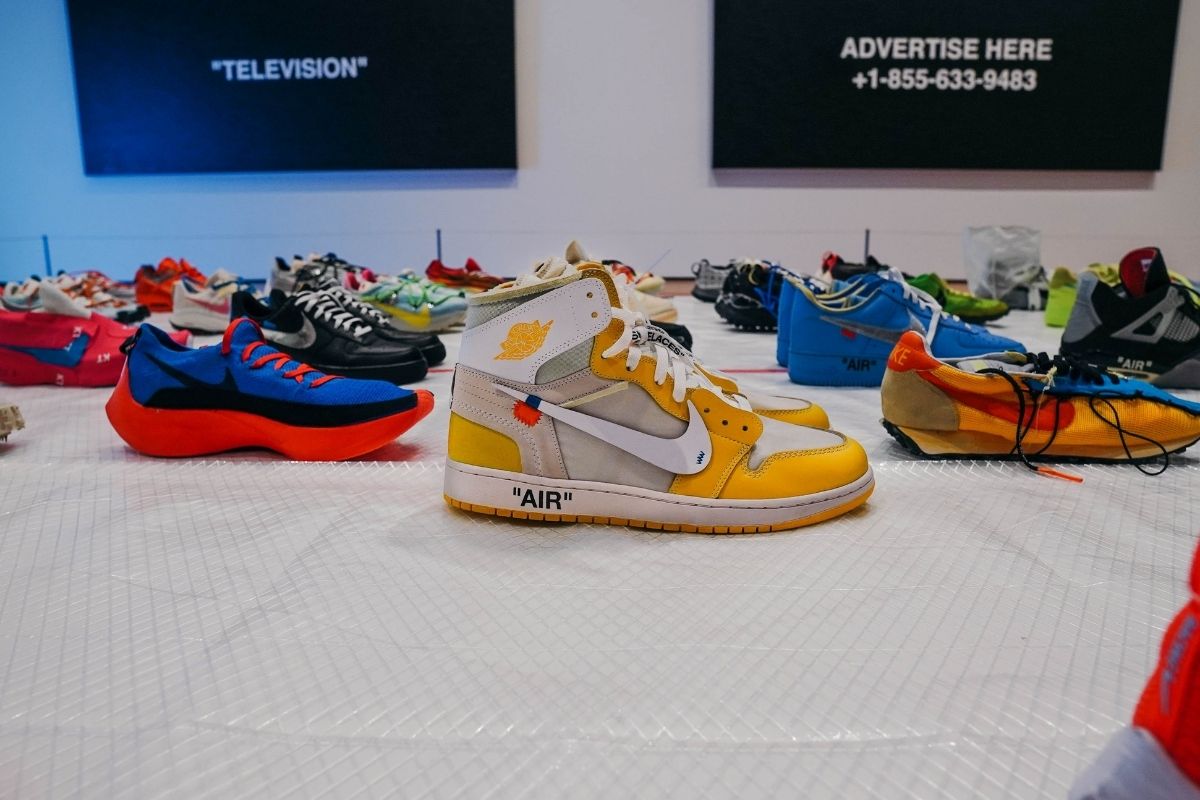How Online Sneaker Education Helps Sneaker Industry Creators
Sneaker YouTube is a growing genre where there are several different types of videos and content that are being made. You have higher-end productions like Complex’s “Sneaker Shopping With Joe La Puma,” where he takes celebrity guests to sneaker stores and then interviews them, sees what they purchase, and gets their thoughts on sneakers.
You also have debate shows like the one I’m involved with on Sole Collector called “Full Sized Run.” And you also have a lot of independent creators out there making their own vlog-style content who aren’t attached to any media company. The video might be going through their day, they might have a new pick up they want to show, they may have their thoughts on some sort of sneaker content, or they might even have beef with another sneaker YouTuber. And it’s always usually first-person style following them around the city if they’re on tour if they’re going to a Sneaker Con event, or just what’s going on in their life.
And people really get attached to these personalities. You have guys like Qias Omar, who has a lot of vlogs. You have someone like Jacques Slade, who’s known for his unboxing videos. It’s a true unboxing where he takes boxes and cracks them open right on camera, and you find out what’s there. They don’t let you know in the title what their shoes are, so you get the feeling of suspense.
If you’re in the know about footwear, you probably have a feel for what’s in that box. But for a lot of kids, they get excited. Unboxing videos are huge on YouTube right now. You have people unboxing Disney characters that have tens of millions of views. It may seem like pretty silly content, but there really is some excitement around seeing the unknown and having it revealed in front of you.
We do the unboxing videos. We do the decor content. But we’re also trying to figure out ways to look at things through a different lens. One way is through our game show on Facebook called “Price the Hype,” where we took the format of a similar show on TV (which I won’t name) and injected sneakers into it.
We make up these mini-games where we force a person to actually pretend to buy their shoes with an app we built and then take a photo of their shoes to do a real quick flex. If they do that, they win a challenge. If they don’t win the challenge, maybe we pour chocolate syrup on the $1,000 pair of sneakers that they were trying to get!
There are also some debate and opinion style shows like “Full Size Run” or “Quickstrike,” where it takes on an ESPN “Around the Horn” feel. There are people with opposite views on the same sneaker or sneaker-related topic, and they debate.
Indie Media Creators Hold Brands Accountable
A lot of people accuse sneaker media of being too safe in terms of their relationships with brands and with stores and them being afraid to call people out. We created the show so we could do just that. And some of the people at the brands aren’t happy about it, but we’re glad that we get to speak our voice.
A lot of sneaker media is very objective, and it’s just giving you the straight facts about what’s happening, what’s releasing, how did this release go down, things like that. We’re there to give our own opinions, tell you why we think this shoe was a garbage fire, why we think this shoe is better than other people realize, why this designer messed up, things like that.
There’s a couple of reasons why you need to remain authentic in sneaker media. One is that the brands really need you more than you need them. You’re here to serve the community, not necessarily the brands. I think a lot of people let that slip and don’t realize to what extent they need to be honest with people about exactly what happened. And I understand because it’s a difficult relationship to maintain. If you’re going to tell people how Adidas messed this thing up and you’ve got a contact at Adidas, it makes them look bad. But you’ve got to tell the truth.
Also, you have to think about your authenticity when a brand approaches you with some type of partnership. Maybe you’ve got enough of a social following for them to want you to take a little bit of money to post something on your Instagram.
The first question is, do you actually like that thing? Is that a shoe you would actually wear? The second thing is, is it going to alienate your audience or your followers if you’re on there shilling with a hashtag ad post about how much you like this shoe? I’ve taken money to post things on my Instagram before. I got plenty of hate for it, but it was a shoe I actually liked, and I felt comfortable with it.
Can Social Media Make Money for Creators?
There’s a lot of different ways to get paid off of social media. There’s traditional ad revenue where you’re getting a cut of the ads from YouTube. Influencers might be offered sponsorships where a brand might come in and offer them a nice check to exclusively wear a certain brand in their videos. And there’s a traditional corporate sense, which I fall into, where the company gets the ad revenue, and you get a salary. When I started out as a freelance writer, I was getting paid per story. It may start out as a passion project, but there are different ways to actually pay your bills through sneaker media.
There’s also vlogging, which is a popular format in sneaker media. Take examples like Money Kicks, who is a 16-year-old kid who just happens to have billionaire parents and wild exotic animals at home. You know, he documents how he lives his life. And it could be Fat Joe and Khaled coming by his place to meet his monkey or his lion! Another one that we use at Complex is called “Life at Complex,” where it’s Tony. It’s just his day-to-day life or just things that go on at the Complex office. One aspect is opening the mail that we get from our viewers. We get a lot of really cool promotional packages from a lot of different companies, and not just from sneaker brands.
So, there’s a lot of different formats. There might be one that doesn’t even exist yet. I think the most important part is knowing that there’s going to be an audience for something and doing something that you know will give a unique point of view on footwear that hasn’t been seen before. There are a lot of ways to get into sneaker media. You don’t just have to be a blogger or a YouTuber, which is what most people first think of when they think of sneaker education. You can just run a really good curated Instagram or Snapchat account.
One example that comes to mind is Corgishoe. He’s built a following based on just buying sneakers on clearance and then storing them for years before he sells them on his Instagram. And people will find him, and they’ll say, I remember these. I forgot these existed. He’ll resell them on his Instagram and then delete the photo right after. It’s all about finding a niche or finding a way that is, one, relevant to you and that an audience is looking for.
Our show “Full Sized Run” all started off as a Facebook Live broadcast every week before it got to YouTube and before we had sponsorship money. You look at DJ Khaled’s Jordan partnership. I feel like that started off when he was a real pioneer in using Snapchat first and cultivating an audience.
There are also these super-niche audiences. One guy that comes to mind is Brad Hall. His unboxings are kind of a mix of dry humor and comedy and an actual unique point of view on products. He’s not really taking himself too seriously. The quality of it is almost something that could be seen on Comedy Central. That’s just one example of how you can have a super targeted audience outside of just the Complex’s and the Sole Collectors and the Sneaker News and the Nice Kicks talk.



